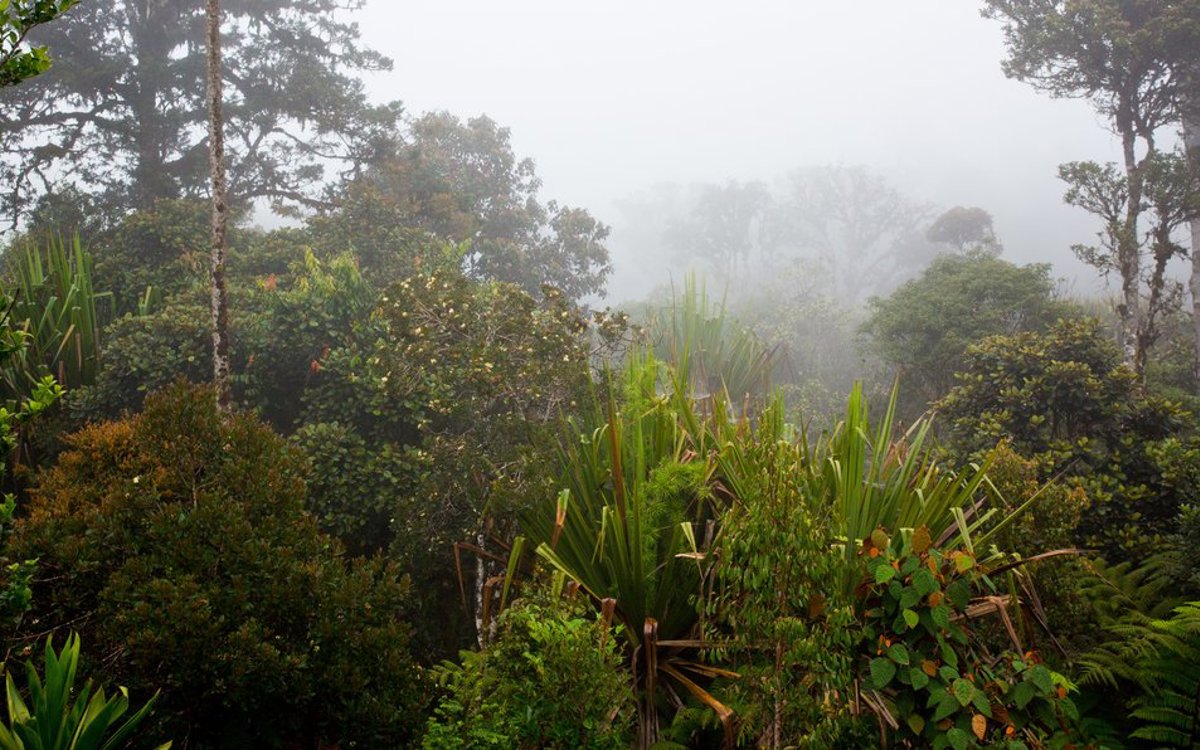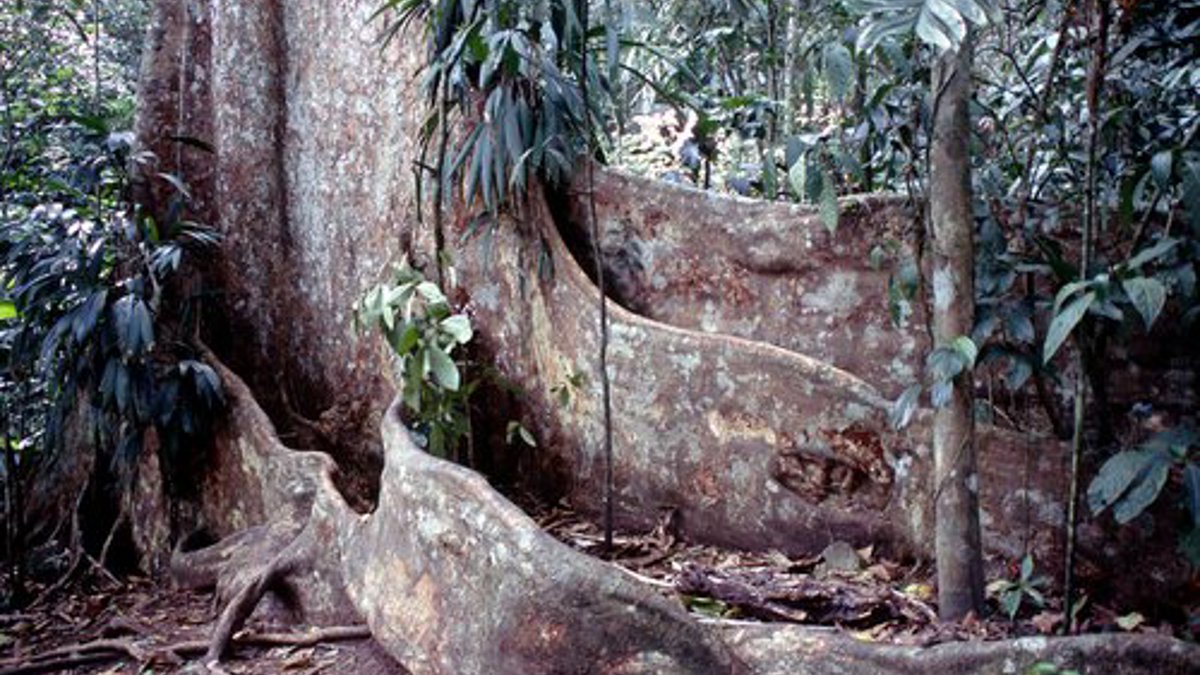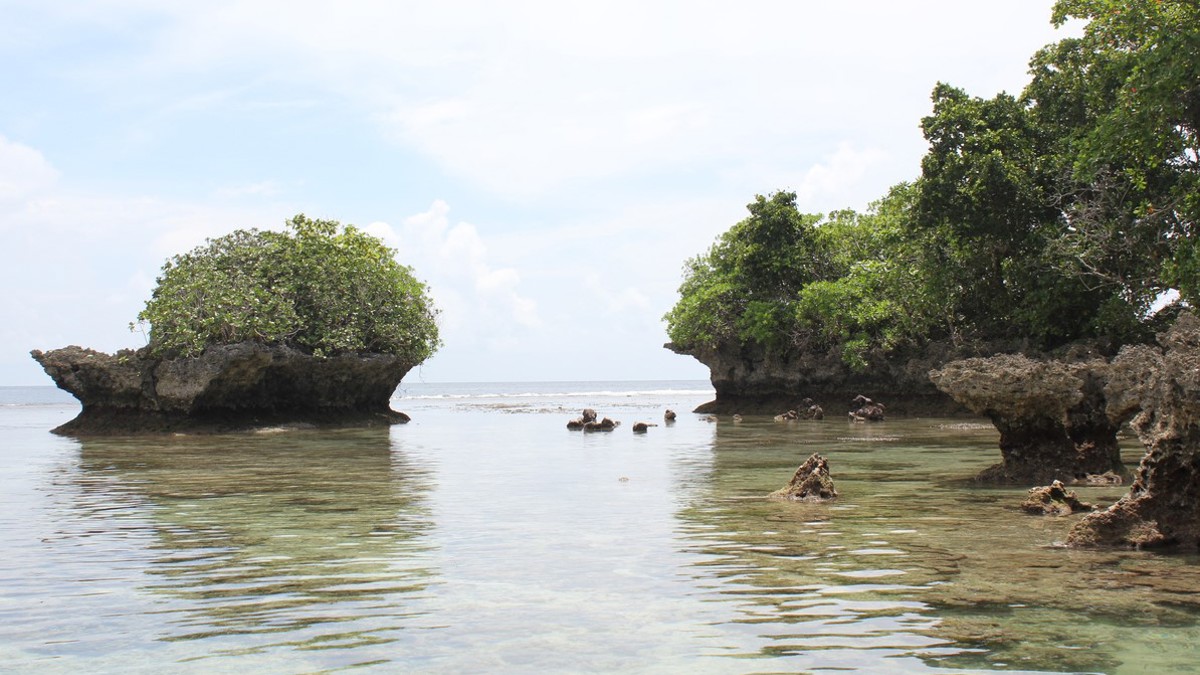The revered forest spirits who protected an island ecosystem.
By Linus s. digim’Rina, University of Papua New Guinea

How revered forest spirits protected an island ecosystem.
By Linus s. digim’Rina, University of Papua New Guinea
To the east of Papua New Guinea lies the Trobriand archipelago, rising up from coral formations in the Solomon Sea. For centuries, the cosmos of these islands was encapsulated into a tangible world where the social and the physical environment were intertwined as one; in which plants, animals, and human beings could communicate intelligibly, emotionally, and meaningfully.
This shared culture extended beyond humans, animals and plants, to include fires and smoke, breezes and gales, heavy and light clouds, waves with foam and without, short or long turbulent currents, good seas and bad, soil, rocks and pebbles. All were living forces with awareness, feeling, and intent. All shared the same space and could see, hear, smell, and sense their being among others. All knew the difference between a harsh environment and a calm one. They could be angered, disgusted, or comforted by the warmth of another’s arrival and presence. All experienced fear and shame when they sensed mistreatment and abuse around them – the flames of a wildfire or a ruthless logger – and recoiled to wonder about what went wrong or where they failed.
All these forces seemed to speak the same language, could understand each other, and agree to disagree or say sorry. Their respective home boundaries were recognised, their space revered and respected – reverence, after all, is fundamental to living together. For both human beings and natural ones, failure to show respect could invite each other’s wrath – be it now or in years to come.
This seemed be the understanding and the way the world was shared; near yet far away, mutual yet potentially hostile: an approach embodied by spirits, both feared and respected, known as Tokwai.
The revered Tokwai abodes
Some years ago, Chief John Kasaipwalova, an author and elder clansman of the Trobriand Islands, observed that the notion of conservation was neither unfamiliar nor was it vogue. Indeed, it has been part of traditional practices for centuries, but is seen differently and perhaps more subtly.
On the Trobriand Islands, huge buttressed trees, rocks, grottos and coral outcrops were the abodes of spirits known as Tokwai, the wood sprites. Wise humans dared not touch, torch, trespass upon, or indeed go near these abodes. Early morning smog emanating from a tree or rock in the forest was a sign of Tokwai’s presence around a heart-warming fire. These are the revered and feared abodes of Tokwai spirits.

Tokwai are gifted and generous spirits, yet notoriously taken to kidnapping cute and wayward little children. Their usual targets are fair-skinned, straight-haired babies and children, who become targets as soon as they are separated from their caregivers. Once captured, a kidnapped child may be blessed with a special gift and then returned home weeks or even months later. These special gifts might range from miraculous healing powers to higher yields in whatever they grow or excellence in almost anything they would wish to accomplish. Sometimes a child is returned with a swollen face or disorientated mind, or a stunted physique that reveals itself over time.
As revered Tokwai dwellings, these giant trees, rocks, coves, and corals remained protected havens. To fell a special tree for a canoe or house post, one is required to first seek permission from its inhabitants. The requisite ritual is to beg for the Tokwai’s understanding and willingness to recognise the people’s need and migrate to a nearby tree or rock instead. Forced eviction was never an option.
In its own strange and remote way, fear and respect for the Tokwai brought protection to these trees, rocks, and grottos. People soon learned that these huge trees also provided shade and lasting coolness of air – known as khekwau – in which smaller trees and gardens could flourish, meaning the Tokwai also sustained the lives of the trees and plants which surrounded their homes.
Almost unconsciously, the mutual relationship between the Tokwai and the people helped to sustain the ecosystem. Conservation was achieved and sustained almost effortlessly through practice rather than through stern instruction and or loud campaigns. It was not taught from books and classrooms, but rather from living life and experience. It was woven into the lives of the people and the plants.

The exodus of the wood sprites
Chief Kasaipwalova contends that this was the cosmological view until the capitalist traders and Christian missionaries – Methodists, Catholics, Seventh Day Adventists, Pentecostals, and more – leapt off their crafts and onto the beaches, bringing with them the notion of a dominant and omnipresent mono-god.
As the missionaries imposed the notion that there was only one god – and thus no other force to be feared, revered, or worshipped – the Tokwai abodes began to lose the protective magic that had, for centuries, kept them safe. As this power dwindled, the new converts realised that Tokwai dwellings could be trespassed upon and destroyed for economic use – carvings for tourists, timbers for houses, and access to richer and fresher soils alongside the burnt buttressed roots of the giant trees.
A sudden death overcame the Tokwai abodes, causing a mass exodus of the spirits. Morning Tokwai hazes disappeared at the foot of the grottos. The smaller trees that relied on the shelter and coolness of the Tokwai abodes wilted and died. Birds were forced to migrate in search of more secure homes. And no more blessings were to be hoped for from the generous Tokwai ‘kidnappers’.
Together with an intensive and unsustainable ‘slash and burn’ system of agriculture, this radical change of attitude towards environmental management choked a traditional method of conservation. The doctrine of Christianity brought with it a heart-rending example of environmental destruction, as the forceful imposition of new ideas dislodged long-established indigenous notions of living well with the environment.
While Tokwai may rarely now be found, perhaps we can still remember something of the respect and reverence they commanded as we try to work out how humans can live among many other lives on earth.
Dr Linus s. digim’Rina is Head of Anthropology, Sociology and Archaeology at the University of Papua New Guinea, and a Trobriand Islander.
Images (from top) by Marc Anderson at Alamy, emarys at iStock, and viavado at iStock
